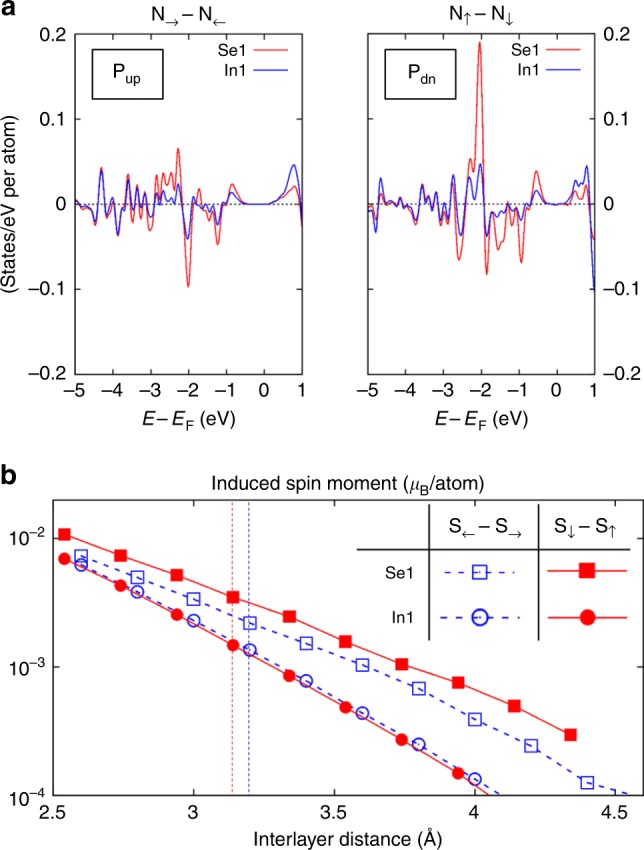Fig. 4.

Magnetoelectric effect in In2Se3, mediated by the magnetic proximity to Cr2Ge2Te6. a Projected spin density of states for the surface (Se1) and subsurface (In1) atomic layers close to Cr2Ge2Te6. Left and right panels correspond to the heterostructures with Pup and Pdn In2Se3, respectively, with the in-plane and out-of-plane spin quantization axis. Given the prohibited long-range magnetic order for the easy-plane 2D magnetic system, the spin-polarized In2Se3 as shown by the left panel of (a) is only a ground state at zero Kelvin. But the easy-axis spin-polarized In2Se3 as shown by the right panel of (a) is practical at finite temperatures. Hence, the magnetization of the semiconducting In2Se3 can be switched by its own electric polarization, while in proximity to Cr2Ge2Te6. b Interlayer distance dependence of the proximity-induced Se1 and In1 spin moments. The vertical dashed lines denote the equilibrium distances predicted by PBE with D2 vdW correction. Note that the induced spin moments are negative, which means the interlayer antiferromagnetic proximity effect in the studied In2Se3-Cr2Ge2Te6 heterostructures
